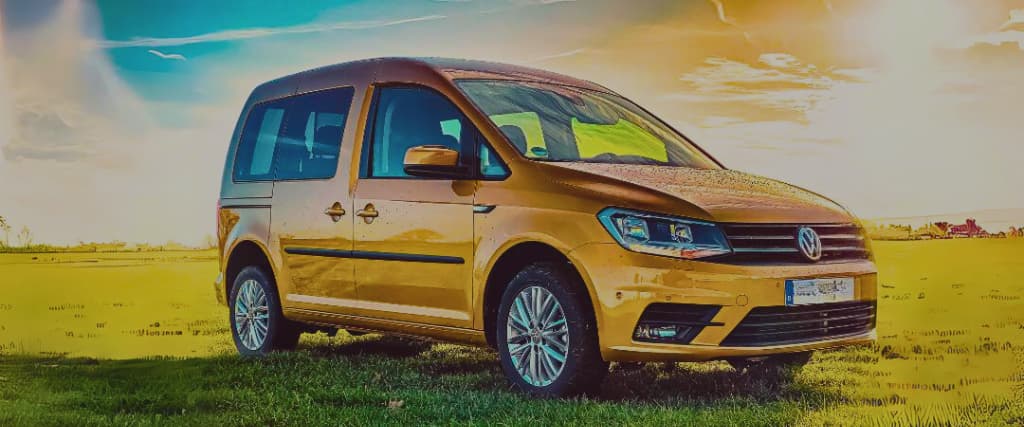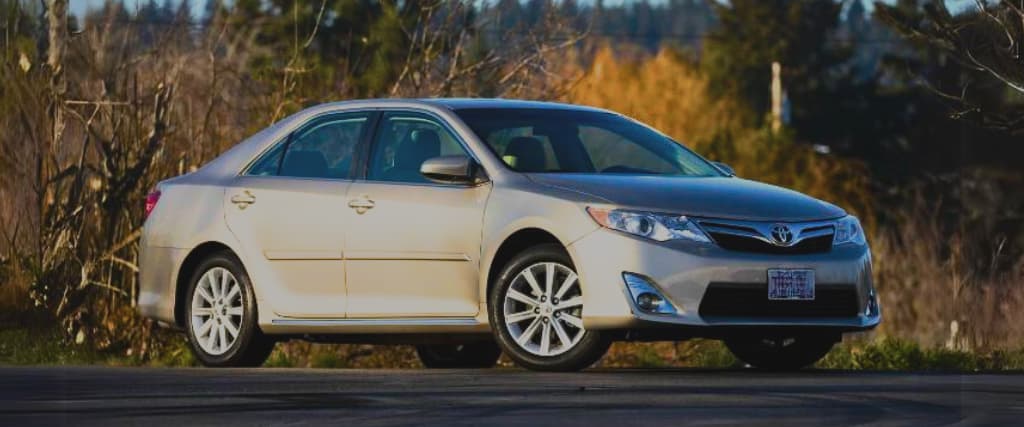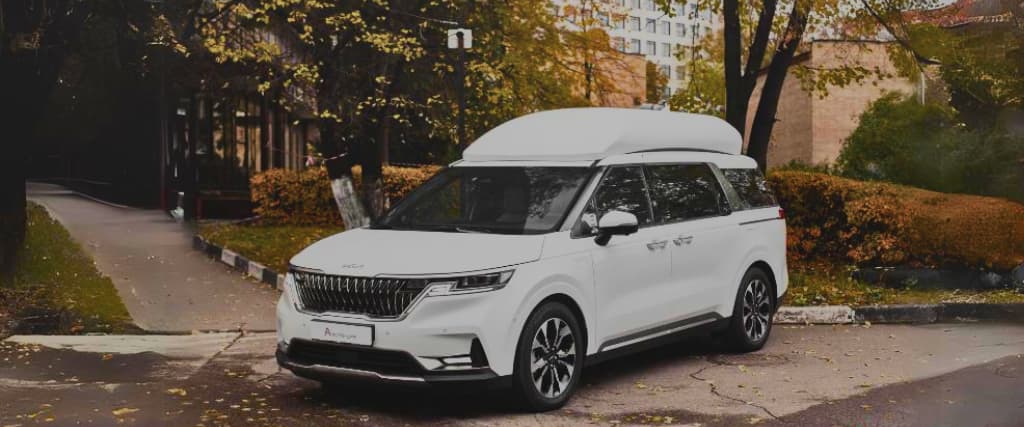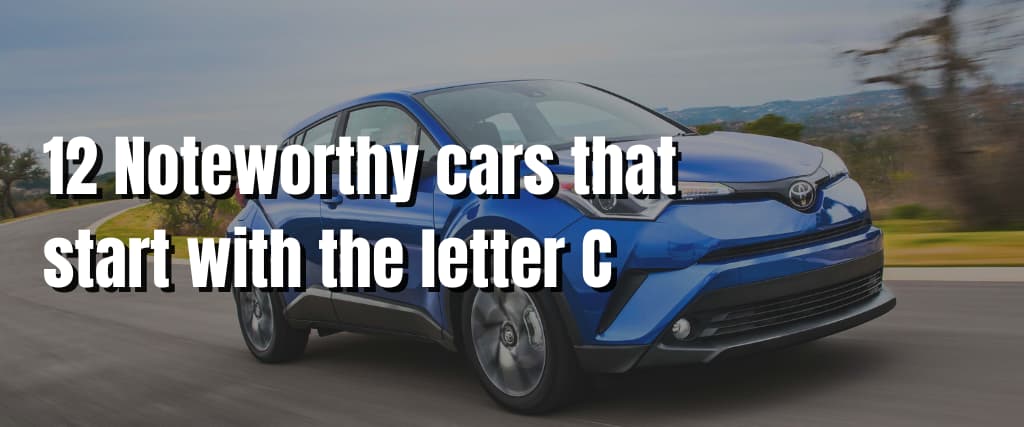Here is a question.
In Australia, how many models of cars can you think of that start with the letter C?
Not sure? Well, we can think of well over 125!
Here is our selection of 12 of the most noteworthy of them.
Toyota C-HR
The Toyota C-HR is a small-sized, yet jazzy SUV that has enjoyed good traction since it was launched in Australia, in February 2017.
Short for ‘Coupe High Rider’, the C-HR embodies a rather adventurous styling for a company that usually takes a more conservative approach to design.
Aimed at attracting buyers from a younger demographic, it sits roughly in the middle of its Corolla and RAV4 models when it comes to its range.
Having been updated towards the back end of 2019, the car is now available as a hybrid petrol-electric hybrid model in the form of its Koba.
Overall their range incorporates both 2WD and AWD models. It starts at their C-HR GXL (2WD) version, which will set you back around $30,915 and tops out with the C-HR Koba (2WD) that is priced a smidge over $38,000.
The car is also referred to as the Toyota IZOA and its only transmission option comes as a CVT auto.
Citroen C4
Based on their C4 hatchback version, the Citroen C4 Cactus is a small-sized SUV that was introduced to the world in concept form at the Frankfurt Motor Show in 2013.
By the time it reached the production stage its design had evolved to incorporate the distinctive ‘Airbumbs’ for which it is well known.
Made to enhance its durability in urban settings like car parks or shopping centres, these air bumps were created to minimise the effect of any impacts it had with trolleys or other car doors.
Arriving on the Australian market in 2016, the C4 Cactus came with a 1.2-litre manual petrol on a 1.6-litre single-clutch diesel auto. It was only available in just one ‘Exclusive’ version.
However, since its introduction, the Cactus range has been thoughtfully modified. To the point where it now includes a range that starts from the Exclusive 1.2T Puretech version, which will set you back about $17,750, to the Onetone 1.2T Puretech model which starts at around $26,500.
Despite competing in a space that includes other SUVs like the Peugeot 2008 and Mazda CX-3, the C4 Cactus remains a popular vehicle among consumers.
VW Caddy

Compact vans are now a way of life for many Australians and one of the most successful brands over the years has been the Volkswagen Caddy.
Ever since it first came to market in 2012, the Caddy has gained a sizeable market share by offering a mix of different body styles and powertrains to suit the needs of different buyers.
Within their range, you will find Caddy Vans. Designed for commercial purposes they consist of both long and short-wheelbase vans that come with diesel or petrol engines.
They also include other models, typically five or seven-seater versions that still have plenty of loadspace at their rear.
Variously known as the Volkswagen Van, Volkswagen Rabbit Pickup and SEAT Inca, the VW Caddy range is quite big.
Starting with the TSI160, which is priced at around $19,500 it extends all the way to the top-of-the-range Caddy Maxi Crewvan TDI250, which will set you back at least $38,500.
Holden Calais
Older readers might remember Holden Calais with fondness.
Brought into the market in 1984, through the third wave of the VK Commodore, the Calais epitomised a more deluxe, yet still sporty feel.
In conjunction with the SS model, the Holden Calais saw the introduction of several new technologies into the Commodore version of one of Australia’s most popular brands. This included anti-lock braking which came out as an optional extra in 1992.
It also provided customers with the opportunity to embrace V8 power. All the way up to the fourth-generation models of the Commodore VE and VF. (It was known as Calais V in V8 form).
In 2018 the nameplate continued when Holden switched to the ZB Commodore, which was fully imported.
Today, the Holden range stretches from the base model Calais which costs $31,400, to the Calais V which starts at around $54,250.
Chevrolet Camaro
Although the Chevrolet Camaro has never officially been sold in Australia, General Motors has come close to introducing it on several occasions in the last 15 years.
Around 2008 it was seen as a real possibility. Particularly as the vehicle shared platforms with the Holden Commodore, making a conversion to right-hand drive quite viable.
However, the subsequent global financial crisis that caused significant stress within the industry, as well as the general decline of the ‘Zeta’ platform on which the car was to be built, put the idea into deep storage.
Now, almost 15 years later, Camaros are still not being made as right-hand drive vehicles anywhere in the world. Yet still, the murmurings that it will soon be introduced into Australia won’t go away.
Toyota Camry

For nigh on 40 years, the Toyota Camry has been considered a solid option when buying a mid-sized Sedan in Australia.
Boasting a reputation for being reliable and affordable, the Camry is viewed as the vehicle of choice for taxi drivers, governments and those who are generally level-headed.
In particular, it has developed handling and styling that is seen as superior to that of rivals like the Volkswagen Passat and Mazda6.
Prices begin at around $31,000 for the Camry Ascent and max out around the $47,000 mark for its Camry SL Hybrid.
Holden Captiva
Launched down under in 2006, the Holden Captiva was designed to go head-to-head with the Ford Territory – which was engineered and designed in Australia.
Offering two different body styles, the model came as a medium-sized, five-seater version, which was often known as the Captiva 5. It was also available as a more in-demand five or seven-seater larger SUV wagon which was phased out in 2017. Both of these were sourced from manufacturing facilities in South Korea.
Most of their earlier models were initially all-wheel drive, petrol-powered V6 models. However, a four-cylinder 2.0-litre turbo-diesel version with a front drive was brought in around 2007. An alternative 2.4-litre petrol model was introduced a year later.
While a facelift in 2011 saw the Captiva take on a bit more style in terms of design, it did have a reputation for inconsistent quality and poor reliability.
Sometimes known as the Opel Antara and Chevrolet Captiva, these negatives arguably still sour its reputation today.
Renault Captur
The Renault Captur was first introduced as a bold concept car at the Geneva motor show in 2011. However, it wasn’t officially launched in Australia until 2015.
Taking the form of a small SUV, the vehicle shares many similarities with the Renault Clio hatchback. One of its key points of difference is that, unlike most of its competitors, the vehicle is a front-wheel drive only. From its launch, it was available as a 0.9 or 1.2-litre petrol engine.
After undergoing a refresh in 2021 the Captur received several upgrades including a 1.3-litre engine. Known as the Renault Samsung QM3 in South Korea, its major competitors are the Toyota C-HR, Hyundai Kona and Mazda CX-3.
The Captur range incorporates the Life model, which has a price point of about $32,000 and goes up to the Captur R.S. Line, which is priced at about $41,500.
Kia Carnival

In recent times seven-seater SUVs have removed some of the appeal of bona fide people movers. However, the Kia Carnival still maintains a healthy fan base.
Back in 2015, an ungraded model of the Kia Carnival was introduced to the market in Australia, which saw it catapulted right to the top spot in the people mover charts. Since then it has stayed there ever since.
Designed to suit the needs of the modern family, it can comfortably hold eight grown-ups. It is also offered in four grades that include S, Si, SLi and also Platinum. All of which have the choice of 2.2 litre, turbo-diesel, four-cylinder power or naturally aspirated, 3.3-litre V6 petrol.
It also has an auto transmission that is six-speed that comes as standard throughout its entire range. Branded as the Kia Sedona elsewhere, its current prices start at about $48,000 for the introductory Carnival S. It increased to around $68,000 for the Carnival Platinum.
Porsche Cayenne
While Porsche is a huge brand name globally, it is actually quite a small one in terms of what it offers. In fact, despite boasting the iconic 911 as part of its portfolio, global sales were so poor in the 1990s, there were serious concerns they could not sustain the brand.
It was for this reason that the Porsche Cayenne was brought to market. Met with cynicism and horror from many of the brand’s purists, the car was a massive success – especially in the USA – which made the company more sustainable.
Still a strong seller for them today, the five-seater, four-door model is available in several different options. This includes the base model all wheel drive, six-cylinder 3.6-litre version which costs around $350,000 to the Cayenne Turbo GT with a V8 4.8-litre twin-turbo that you won’t get much change from $400,000 from.
Dodge Challenger
When it was launched the Dodge Challenger was touted as Chrysler’s attempt to compete with the Ford Mustang.
In Australia, it was never officially sold by the company due to it being a left-hand drive. However, over the years several have made their way to these shores to be converted, thanks to importers specialising in low-volume cars.
The original model which was available between 1969 and 1974 shared many similarities with Chrysler’s Plymouth Barracuda.
That said, today’s version shares the Chrysler 300C platform and offers both V6 and V8 choices.
Mitsubishi Challenger
Now defunct, the Mitsubishi Challenger was a big, SUV off-roader which had similar underpinnings to that of the Triton Ute.
Launched in Australia in 1996 it competed with the Toyota 4Runner and Nissan Pathfinder, enjoying moderate success for almost 20 years. It was replaced in 2015 by the Pajero Sport, which itself shared many of its qualities. (Side note: in Europe, the Challenger has always adopted the ‘Pajero Sport’ moniker.
Currently available with diesel or petrol drivetrains, it possesses several features like low-range and four-wheel drive that are well suited to off-roading.
It is variously known as the Mitsubishi Pajero Dakar, Mitsubishi Strada G-Wagon, Mitsubishi Shogun Sport, Mitsubishi Montero Sport, Beijing BJ2025 and Mitsubishi Nativa in various parts of the world.
Presently, you can buy their entry-level Challenger for about $24,000. The top-of-the-range, five-seater, (4×4) Challenger LS will cost you more than $33,000.


